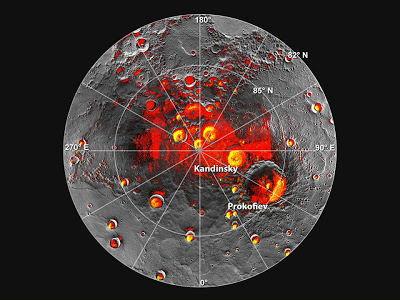

| Visitors Now: | |
| Total Visits: | |
| Total Stories: |

| Story Views | |
| Now: | |
| Last Hour: | |
| Last 24 Hours: | |
| Total: | |
Carnival of Space 279
From
Yesterday, NASA announced a bold new plan of exploration for the coming decade on Mars. It’s exciting. I love plans that include a methodical exploration of other worlds that will help answer the bigger questions out there, like why Mars developed into such a different world than the other inner bodies. But looking a little closer at what few details the agency’s released, it looks less like a concrete plan with a goal and more of a bid to capitalize on Curiosity’s unexpected fame. Which isn’t a bad thing. It’s just sort of an odd thing.
In brief, the new Mars plan will see a series of smaller missions launch in the next eight years culminating in a flagship mission in 2020. In 2013, the Mars Atmosphere and Volatile EvolutioN (MAVEN) orbiter will reach the Red Planet. The Interior Exploration using Seismic Investigations, Geodesy and Heat Transport – InSIGHT – mission will follow in 2016 and take the first look into Mars’ interior. NASA will also support the European Space Agency’s (ESA) ExoMars missions – it will provide the “Electra” telecommunication radios to its 2016 orbiter and an astrobiology instrument on its 2018 rover. The climax will be another science-heavy rover akin to Curiosity launched in 2020.
2. Air and Space magazine blog – Reflecting on the ice of Mercury and the Moon by Dr Paul Spudis
Both the Moon and Mercury have similar polar environments and processes. The long debate – a scientific controversy for over 50 years – about water at the poles of these objects has been resolved. The next steps will be to characterize these deposits in situ using a soft lander and selected instruments to measure the amounts, states and distributions of water in the polar areas. Because of the great difficulty in even getting into orbit around Mercury (let alone landing there), doing this first on the Moon will mostly likely happen first. So, here again is another rationale for sending a robotic surveying lander and rover mission to the poles of the Moon – in addition to characterizing these areas for our future presence there, by inference, we will also learn about the polar processes on and environment of Mercury.
See more and subscribe to NextBigFuture at 2012-12-10 16:22:37 Source: http://nextbigfuture.com/2012/12/carnival-of-space-279.html
Source:



